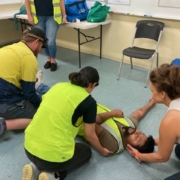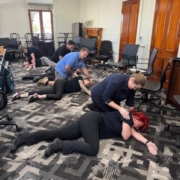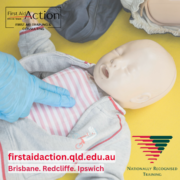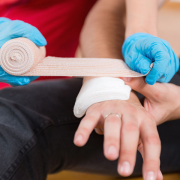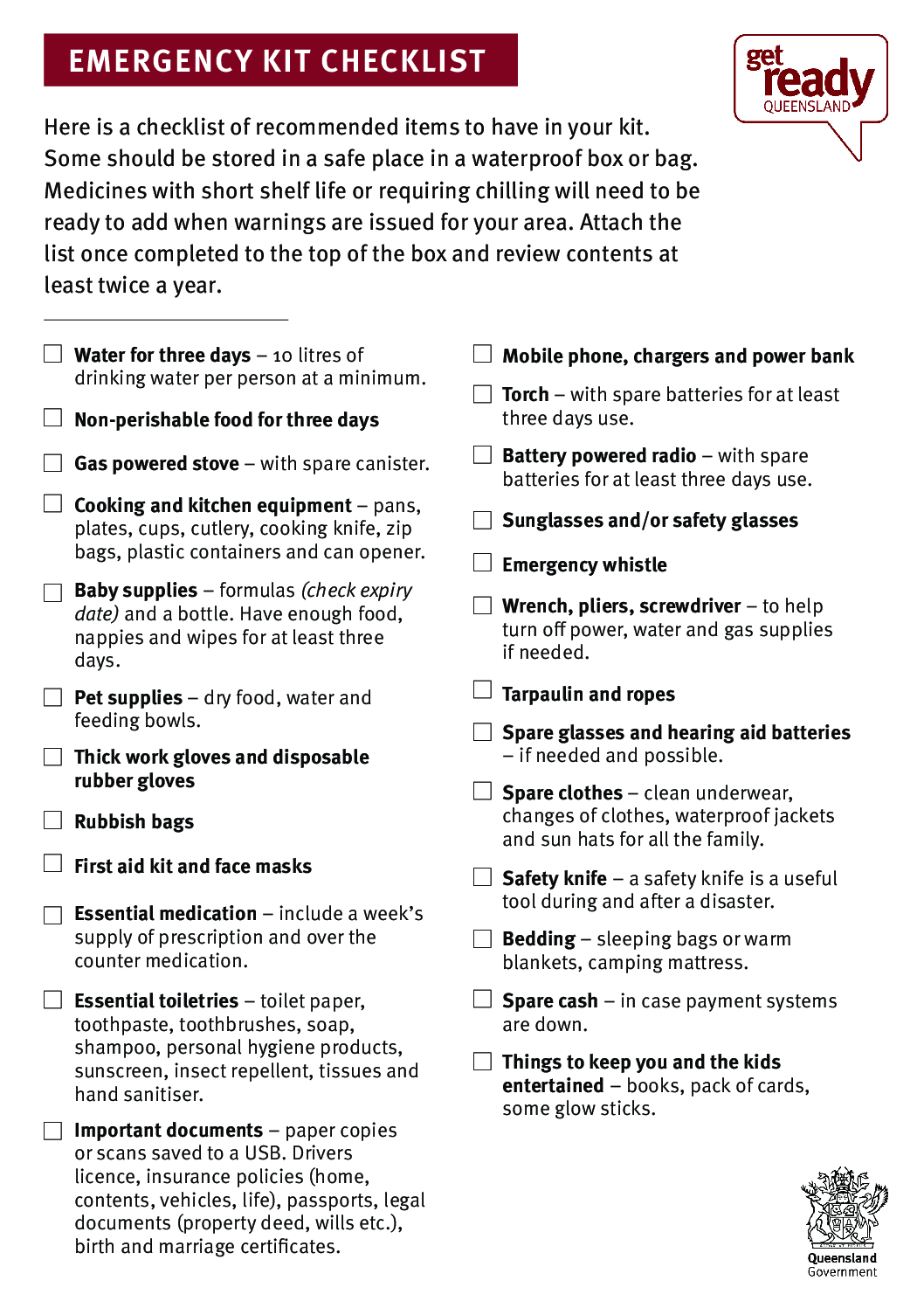Ensuring Workplace Safety
In any workplace, the ability to respond effectively to emergencies, whether minor or extreme, is paramount. This capacity hinges largely on the competence of designated first aiders. However, maintaining first aid proficiency can be challenging, particularly given the recommendation in Australia that first aid skills be updated only every three years. This raises crucial questions: will your first aiders remember what they learned in their initial training? Who is responsible for ensuring that your workplace is staffed with first aiders who can act decisively and knowledgeably in an emergency?
Challenges in Maintaining First Aid Competency
First aid is a vital skill, yet like any skill, it requires regular practice to retain proficiency. Over time, without reinforcement and practical application, the knowledge and techniques learned can fade. This is particularly concerning in a workplace setting where the stakes are high; the inability to effectively administer first aid can lead to disastrous outcomes for the casualty involved.
It is not uncommon for employees trained in first aid to feel underconfident or even panic when faced with a real-life emergency if they have not had opportunities to practice their skills regularly. This is where the First Aid Verification of Competency Service comes into play, offering a practical solution to ensure that the first aiders in your workplace remain competent and prepared.
Introducing Luella’s Verification Service
Luella, an experienced first aid trainer with over 17 years of expertise, now offers a unique service designed to verify and refresh the first aid skills of your workplace first aiders. Her service is tailored to address the gap between initial training and ongoing competency, providing a means to ensure that your first aiders are ready to handle any emergency situation.
Service Components
Luella’s First Aid Verification of Competency Service includes:
- 2 Hour Session: This intensive session encompasses a knowledge test to determine the current level of first aid knowledge among your staff. Additionally, it includes 2-3 workplace-based scenarios using first aid equipment and props to refresh practical skills. This hands-on practice is crucial for reinforcing the techniques and procedures that may have lapsed.
- Theory and Skills Refresh: Throughout the session, Luella addresses any areas where your staff feel uncertain or have forgotten critical aspects of first aid. This personalized approach ensures that all participants leave with a renewed sense of confidence and capability.
- Performance Report: After the session, Luella provides a comprehensive report on each first aider’s performance. This report highlights areas of competence and identifies individuals who may need additional refresher training to meet the required standards.
Cost and Logistics
The cost for this service is $300, with an additional $50 travel fee (travel fee may vary if outside our service area – please enquire). GST is not included in these fees. Considering the potential consequences of having undertrained first aiders, this investment is a small price to pay for ensuring workplace safety and preparedness.
The Importance of Regular Verification
Regular verification and skill refreshment are essential to maintaining high standards of first aid competency within any organization. By opting for Luella’s service, you are taking proactive steps to safeguard your employees and create a safer work environment. The benefits are clear:
- Enhanced Confidence: Verified training boosts the confidence of first aiders, ensuring they feel prepared to handle emergencies effectively.
- Increased Preparedness: Regular practice and testing keep first aiders’ skills sharp, reducing the likelihood of panic or hesitation during an actual emergency.
- Compliance: Ensuring your first aiders remain competent helps meet workplace health and safety regulations, protecting your organization from potential liabilities.
Conclusion
Investing in the First Aid Verification of Competency (VOC) Service is a commitment to workplace safety and the well-being of your employees. By regularly verifying and refreshing the skills of your first aiders, you ensure that your workplace is prepared to respond to emergencies swiftly and effectively, no matter how minor or extreme. Luella’s expertise and tailored approach offer a practical solution to maintaining first aid competence, providing peace of mind and security for your entire organization.
Don’t leave your workplace’s emergency preparedness to chance. Ensure your first aiders are equipped with the knowledge and skills they need to act decisively and confidently. Contact Luella today to schedule a verification session and take the first step towards a safer, more prepared workplace.
Call 07) 3901 0599
Email: info@firstaidaction.com.au
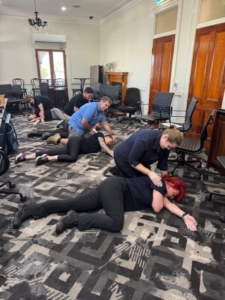
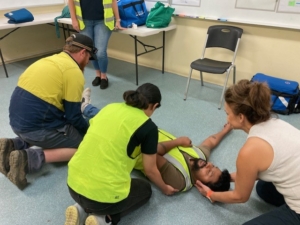
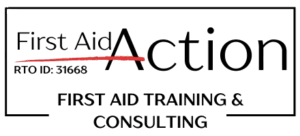
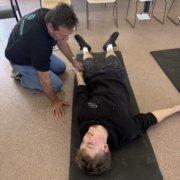
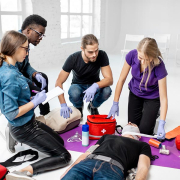


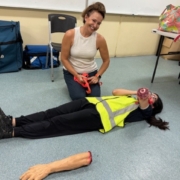
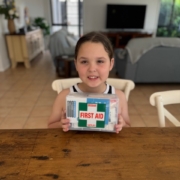
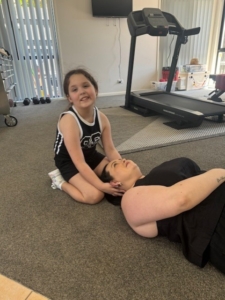 Here is 8 yr old Alexis helping her mum keep still after falling down the stairs at home.
Here is 8 yr old Alexis helping her mum keep still after falling down the stairs at home.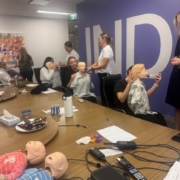
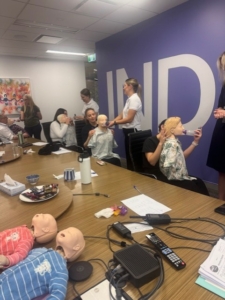 Staff from Dexus (Indooroopilly Shopping Centre Management) learning how to assist with an Asthma Attack.
Staff from Dexus (Indooroopilly Shopping Centre Management) learning how to assist with an Asthma Attack.